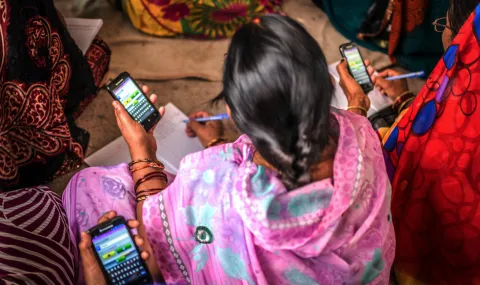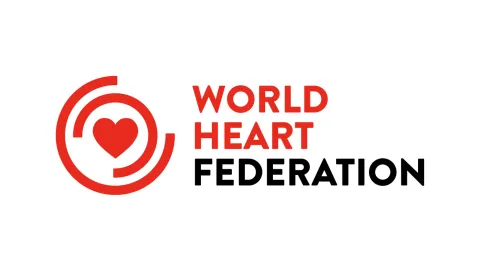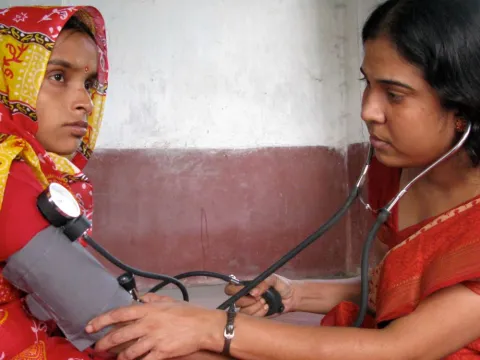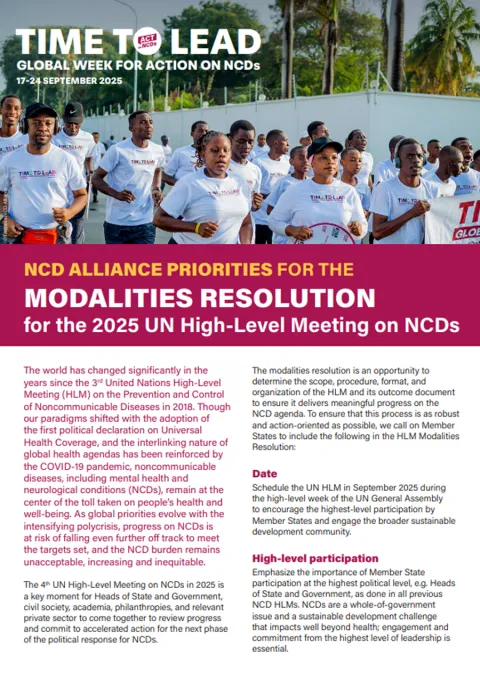Heart health must improve in the digital age

Our online world is revelatory. And not just because of what we post, like and share. “Digital-everything” is shining a light on glaring gaps and inequality, and no less so in the health sphere. It has taken a pandemic to emphasise that digital connectivity, access and telemedicine are great tools, but also that lack thereof can sometimes mean the difference between life and death. And whether we call it m-health, e-health, telemedicine, or the all-encompassing digital healthcare, the option to get seen, diagnosed and treated without the need for an in-person visit is at stake more than ever. Indeed, efficient “doctor-distancing“ has increased in these unprecedented times, but not yet for everyone.
Digital healthcare is growing and so is the incidence of cardiovascular or heart disease (CVD) and stroke, which now surpasses 18 million deaths each year, many of them in low- and middle-income countries (LMICs). Because many non-invasive tools are available in cardiovascular medicine, the heart is likely to be a prime area of development in digital healthcare. Digital healthcare can help monitor patients remotely and in non-invasive ways. Digital platforms can connect pharmacies and enable pharmacists to be up-skilled in providing counselling for people living with CVD or stroke. In addition to remote consultations, there are also wearable devices that include smartwatches and more sophisticated devices that read the wearer’s data from embedded microchips and sensors. Other examples include hand-held or chest-applied electrocardiogram (ECG) devices attached to smartphones that can record heart rhythm and help diagnose irregular heartbeat when it involves atrial fibrillation.
Expansion must address inclusion
As a critical tool in our arsenal to fight heart disease, we must ask ourselves where and for whom is the digital health revolution taking place? Evolving healthcare is a well of opportunity and with burgeoning technology comes a caveat. If missed or mishandled, the opportunity can portend a heavier burden and a greater gap in access, affordability and equitability.
Many people living with heart disease and stroke who succumb to it live in low-resource settings and are often excluded from digital access or digital health. In addition, those living in rural areas, far from the first available clinic, are not covered by any healthcare instruments. And an older population might be less used to the idea of solutions via digital channels.
Geography, gender and income level must not impact equitable access to healthcare. The future of healthcare will also be judged by our ability to address these artificial barriers. The Mobile Gender Gap Report 2021 states that women in low- and middle-income countries are 7 per cent less likely than men to own a mobile phone, with still 234 million fewer women than men accessing mobile internet. Mobile broadband technology has offered a unique opportunity to countries and areas where fixed line networks were non-existant. Still, according to recent data, internet-connected households are mostly in urban settings, at 72 per cent, compared to rural areas, at 37 per cent. In least developed countries, 17 per cent of the rural population has no mobile coverage, with only a 2G network covering 19 per cent of the rural population. Even in the USA, nearly 30 million Americans cannot fully benefit from the digital age.
Playing catchup
The healthcare sector was among the first to harness the opportunities of digital technology, though it trails sectors such as banking and transportation. The growth of wearable devices and the informed use of data will help yield health returns in wealthier countries. Across Europe, health information sought online has more than doubled in a decade. Digital technology is already changing the landscape in LMICs and continues to grow. It is imperative that these countries’ most vulnerable communities have access to continuous care too through connection to medical services.
What are some key pillars of success in digital healthcare? Leveraging technology must be anchored by investment, infrastructure, education, and data protection that help build public trust. Weaving digital literacy into overall education efforts will increase comfort levels for many who are not used to technology as a health resource, including those in the health workforce.
Heart health equity is the building block of a thriving society, and optimising healthcare is a multi-sectoral challenge. Policymakers, economists, civil society, academia and the private sector must be at the planning and implementation deck. All healthcare approaches – digital and traditional – must be accessible to the most marginalised.
About the author
Dr Jean-Luc Eiselé (@jletwit, @worldheartfed) is the Chief Executive Officer of the World Heart Federation (WHF) which marks 29th September as World Heart Day. He was trained as a biochemist working at the Biozentrum in Basel and the Pasteur Institute in Paris, and has worked in the field of medical association management for almost 20 years. He joined the World Heart Federation (WHF) as Chief Executive Officer in May 2017, strengthening the business model, the focus on communication and advocacy and membership engagement. #WorldHeartDay #UseHeart
This article was first published in the World Economic Forum Agenda. We thank World Heart Federation for their permission to republish.










